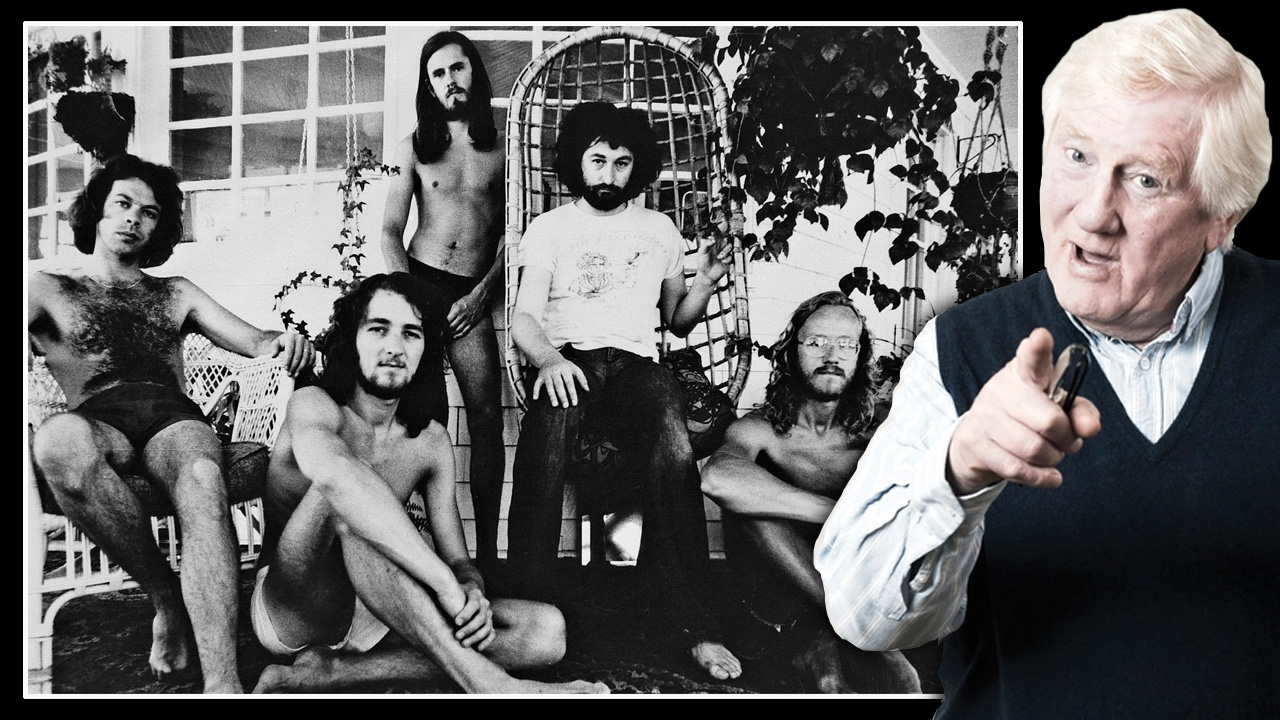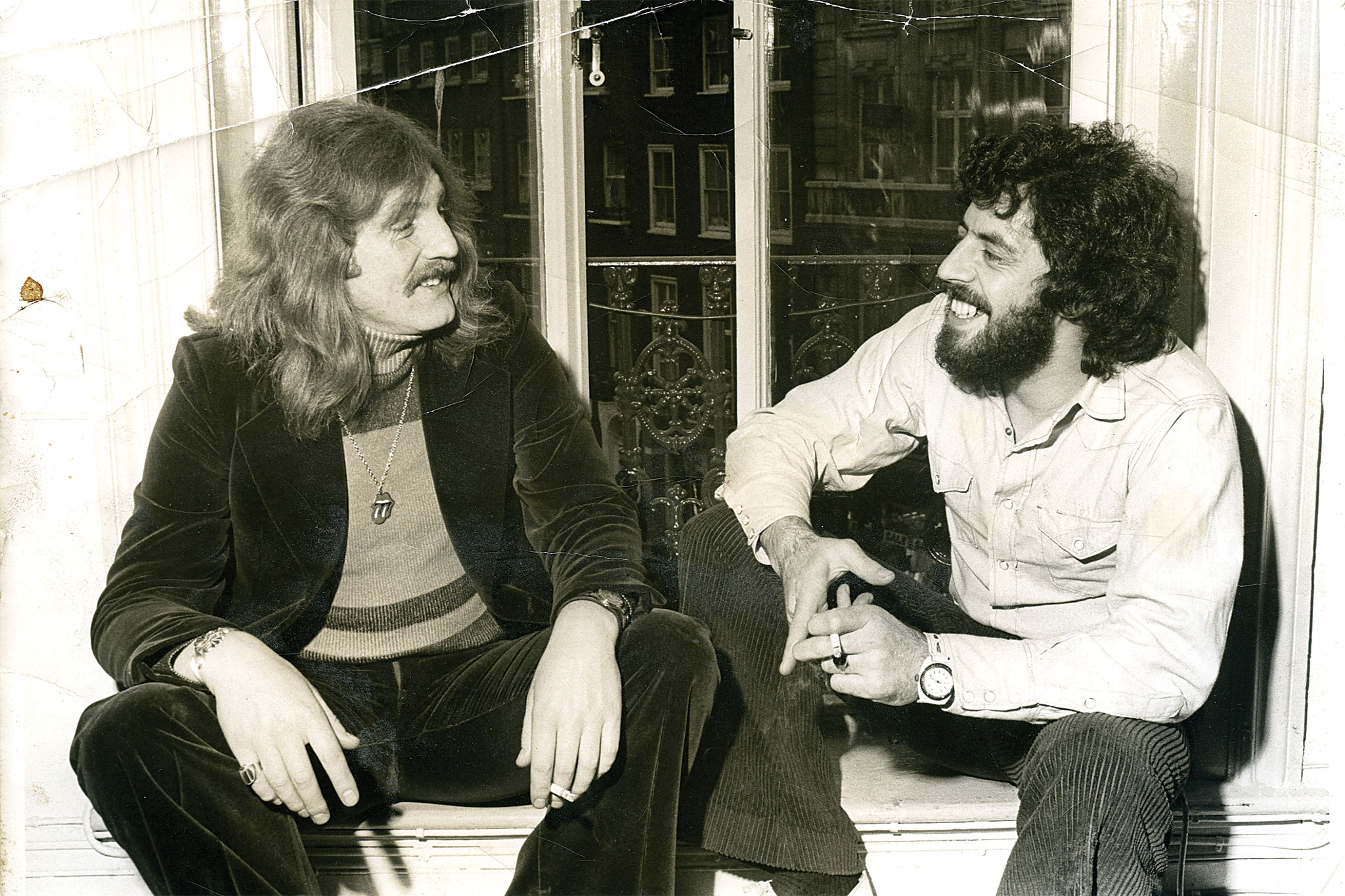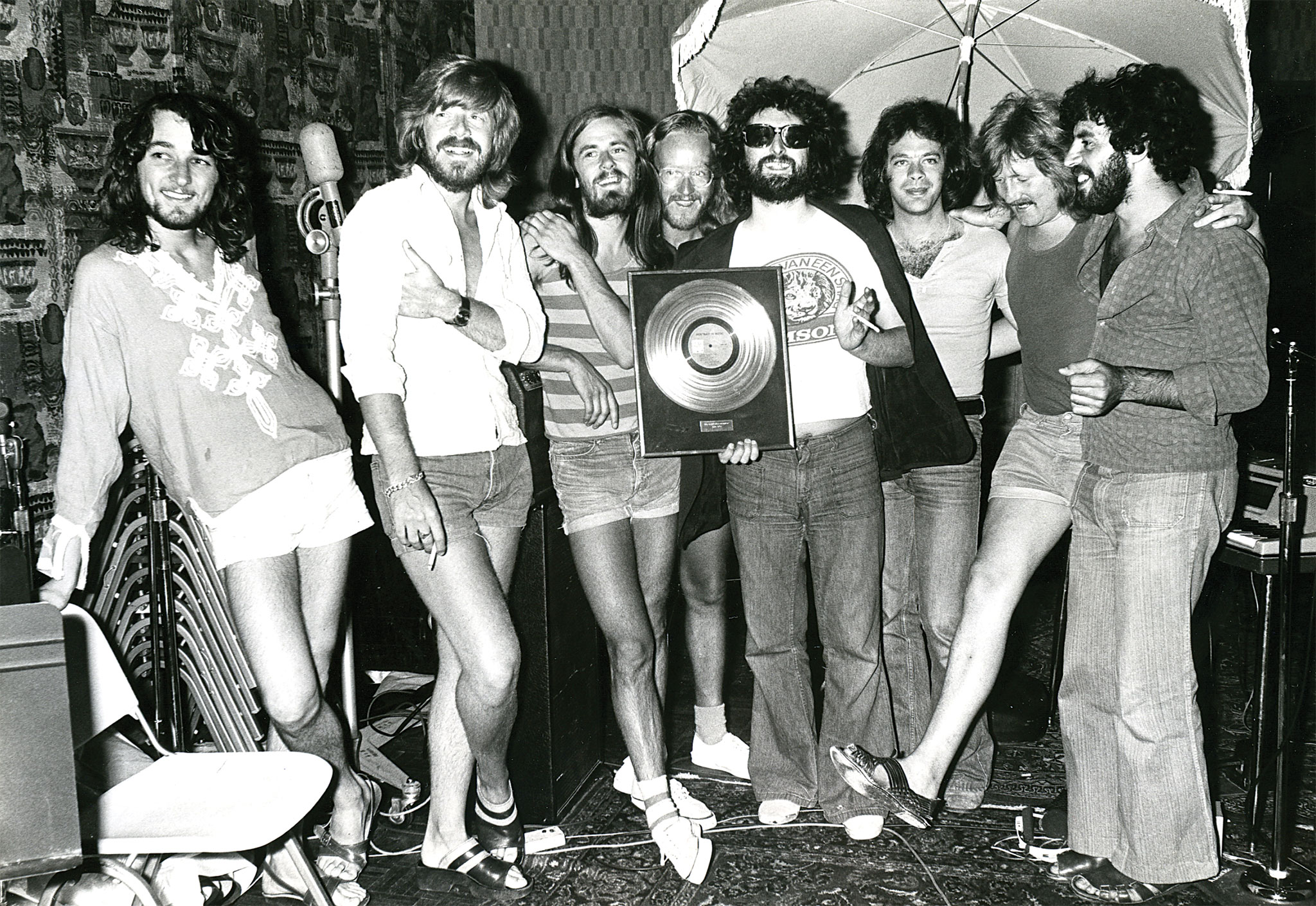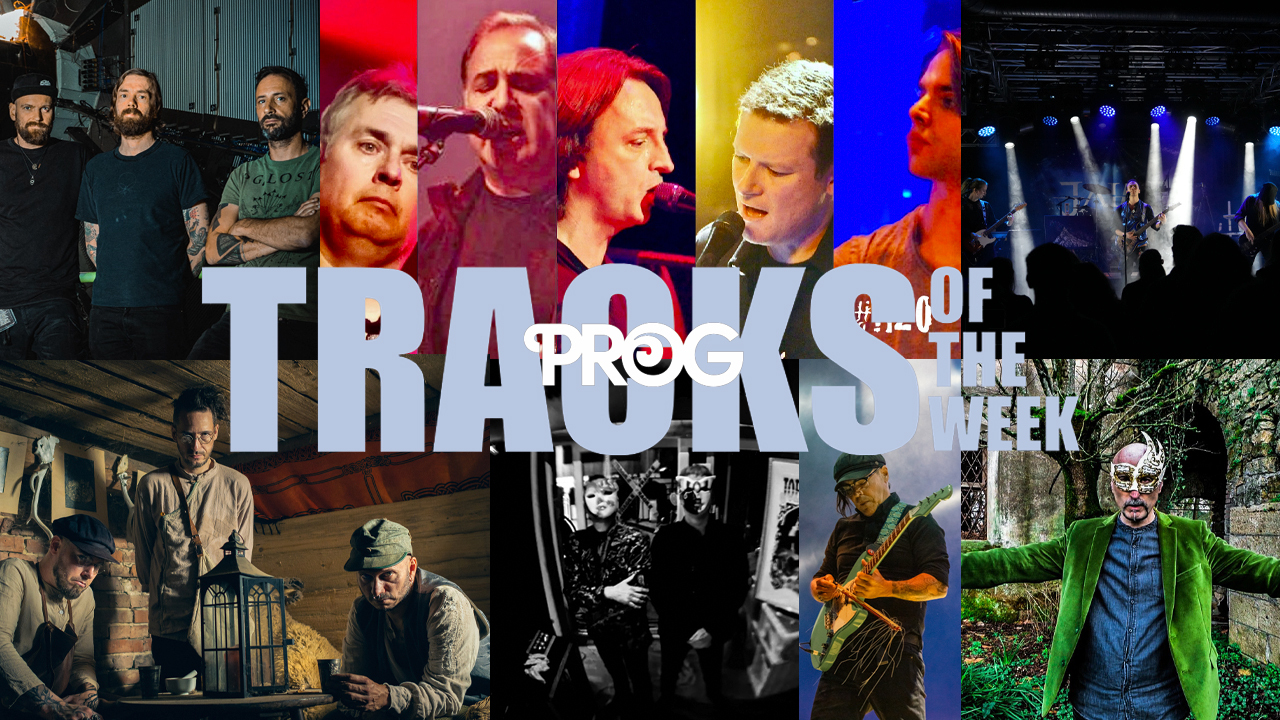“Their albums hadn’t accomplished much. I went to see them and liked them, especially the new songs… I then witnessed their break-up”: How manager Dave Margereson rebuilt Supertramp and helped them deliver a set of classic prog albums
With an approach based on belief and camaraderie, the self-described captain of the band’s pirate ship steered Supertramp from failing pop group to hit records including Crime Of The Century and Breakfast In America

As an A&R executive in the 70s, Dave Margereson identified future stars Queen, Andy Fairweather Low and Gary Moore, among others – but he abandoned the role after bonding with Supertramp just as the group disintegrated. With a character-led management style he turned their fortunes around, helping deliver some of the greatest prog music of the era. In 2016 Margereson told Prog how it had come about.
The all-conquering period in Supertramp’s history between 1974 and 1983 is one of the most fondly regarded in all of prog. Formed in 1969 by Rick Davies and Roger Hodgson, the group signed to A&M the following year and subsequently released two albums to diminishing returns. By 1973, with most of the original line-up deserting them, the duo were thinking of packing it all in. It was around this time that Dave Margereson, something of a young marketing and A&R buck, was given a choice of artists on the label roster to look after. He was fascinated by the potential of the two writers and felt they should be given a second chance. Before long, he was involved closely in their A&R; and within a year, became their manager.
By the end of the decade, Supertramp had released a run of four albums that have long been regarded as some of the best of the 70s, with the last release, Breakfast In America, going four times platinum in the US alone.
Margereson is the epitome of under-the-radar management. Aside from Supertramp, he worked with Chris de Burgh and, later, The Lucy Show and Labi Siffre. Few know his name outside the music business – but within it he’s something a legendary figure. An affable mix of theatricality and the air of old-world gent, he’s hardly backward in coming forward.
With a throaty laugh honed on years of Dunhill International cigarettes, he says: “Although not musical myself, as a promo man and then A&R man, I had realised that I could recognise a good tune. That, together with my sense of theatre, art and marketing, helped me to achieve success.”
Born in Surrey in 1945, he got his break through great friend, Derek Green, who would later be the MD of A&M’s British end. “Derek was my next-door neighbour,” Margereson recalls. “We both went to Mitcham Grammar. Derek left at 15 and became the motorbike messenger for Carlin Music, taking over from Stevie Marriott.”
Margereson stayed on for his A-levels and tried to follow his passion – acting. “Not having any money, I had to apply for a scholarship at RADA, along with 3,000 others.” He got to the last four but only two were accepted; so he joined a new repertory theatre company in Blackfriars, which went bust after six months.
Sign up below to get the latest from Prog, plus exclusive special offers, direct to your inbox!
Soon he joined Green in the burgeoning pop business. “Derek was now in the copyright department at Carlin Music and told me of a similar position at KPM music publishing in London’s Denmark Street,” he says. “Fully expecting to later return to acting, I started in 1964 and learned how publishing works. I later moved into the mood music department and learned about composers and recording TV themes and jingles.”
It was a fast-moving time. In 1967 Margereson joined Screen Gems Music doing song placement and radio promotion. It was only to last six months before his persistent lateness got him the sack. However, he had started to make a name for himself – on the day he was fired, he was headhunted by CBS Records, joining their London promotion department.
It was a successful period for him. After his time in promotion, he moved into A&R, initially assessing which US acts’ products should gain a UK release, before looking at domestic signings. He signed Johnny Nash with his I Can See Clearly Now LP, plus Bob Marley and Gary Moore, among others. It wasn’t be long before Green and Margereson’s paths crossed again. “In 1973, I was asked by Derek – now MD at A&M – to start their A&R department. At that time at CBS, I was negotiating with Andy Fairweather Low and Queen. I took both tapes with me to A&M. Derek had also been talking with Andy, who he signed. Queen was rejected by A&M’s A&R department in Los Angeles.” Within a matter of years, Queen would be – well, Queen. “They listened to me after that!” Margereson chortles.
Green asked him to review A&M’s roster, especially the artists whose contracts were up for renewal. “Supertramp was a completed lease-tape deal for two LPs, neither of which had accomplished much. I went to see the band live several times and liked them, especially the new songs Dreamer and Bloody Well Right. I then witnessed their break-up.”
They chose me, and I accepted… my A&R commitments had almost become a distraction
He thought the band were worth fighting for. “I’d made a bit of a bond with Roger, Dougie Thomson, and [sound man] Russel Pope; and I had a huge respect for Rick, although he was – and still is – hard to read.” He kept in contact with their whole entourage: Tony Shepherd (lighting), Norman Hall (equipment), Ken Allardyce (sound) and various wives and girlfriends.
He offered financial and personal support throughout the process of finding new band members, and then signed the band direct to A&M. Joining Davies, Hodgson and Thomson were sax player John Helliwell and drummer Bob Siebenberg. “There was a tribal, creative vibe… I was hooked!” Margereson says.
“I immersed myself in all aspects of the band creatively and business-wise. I managed to extricate them from their publishing and agency deals with Chrysalis and made a new publishing deal with Rondor Music. As for agency, I took that role on, except for the US and Canada. I rented Southcombe, a farmhouse in Somerset, for £20 a week, and the whole band and crew, including wives and girlfriends, relocated there to concentrate on working up Crime Of The Century.”

He visited on a weekly basis to check on their progress, and the faith he had shown paid off. Crime Of The Century, released in September 1974, showcased Davies’ and Hodgson’s songwriting at its very apex, with Davies contributing songs that highlighted a cynical world view (Rudy, Asylum, Bloody Well Right and the title track), contrasting with Hodgson’s cosmic optimism (Dreamer, If Everyone Was Listening, Hide In Your Shell). School married Hodgson’s rally against his upbringing with Davies’ ever-remarkable piano work.
The album established the band, setting them on a course to highly commercial prog‑influenced blues ’n’ Beatles rock. Within six months, Margereson had officially become their manager – which meant he had to leave his A&R position behind. “Early in 1975, Crime was taking off everywhere and they were touring. I decided it was time they had a ‘professional manager.’
“I arranged several interviews with Britain’s ‘finest’ but the band came back after seeing them and said they would rather I continued. They chose me, and I accepted I was loving it; and my A&R commitments had almost become a distraction, although I continued at A&M for a further six months. Touring with Supertramp had become the A&M roadshow with Gallagher & Lyle, Joan Armatrading and Chris de Burgh separately weighing in as our support acts.”
We worked hard and played hard and laughed a lot… touring was like a pirate adventure and I was the proud captain
Margereson, who’d signed de Burgh to A&M and later managed him too, also oversaw the Joe Cocker album I Can Stand A Little Rain and Stealers Wheel’s Right Or Wrong. He feels the latter project was a missed opportunity as the partnership between Joe Egan and Gerry Rafferty was on its last legs. He’d put a band together around them but a tour never materialised. “It could have been a whole new beginning,” he sighs.
However, there was much to keep him occupied. Supertramp were on the verge of getting properly established in the US. “My greatest management coup was probably their first tour of America,” he recalls.
Traditionally, up-and-coming acts would tour clubs and small venues on their own or be given a support slot for a major artist. Neither of those options worked for Supertramp. “Their complex stage set-up and precise theatre lighting requirements meant we would not have the necessary time to provide the very best show,” Margereson says. ”We needed to headline in theatres. So, together with our agent Frank Barsalona, A&M New York’s Pat Luce and A&M’s wallet, we concocted a massive radio ticket giveaway.

“Normally, radio would promote six tickets for the lucky winners. We secretly increased it to hundreds of tickets, each winner thinking they were one of just six. We filled the theatres! It cost A&M, and the promoters took some losses – but it was an investment for the next tour. I knew if we could get the punters in, they’d be hooked. It was a massive success.”
Realising the potential the band had Stateside, Margereson was a prime motivator in getting Supertramp to set up home there. “We relocated in 1975 to LA to attack America. We had a permanent crew and we all had our jobs to do – there was no hierarchy.” His time as a record company man made him acutely aware of how to deal with company ‘suits.’ “We became a ‘family’ and bonded with A&M’s staff worldwide.”
As a result, label founders Jerry Moss and Herb Alpert both took a highly active interest in Supertramp’s career – especially after Breakfast In America was nominated for Album Of The Year at the 1980 Grammys. It didn’t win, but it garnered Best Engineered Record (Non‑Classical) for Pete Henderson, and Best Album Package for Mick Haggerty and Mike Doud.
Be fair and honest with people; create good teamwork and camaraderie; and, importantly, never forget the ‘soldiers’
Breakfast In America – the result of hard work over two years – became a worldwide success; as did its attendant live album, recorded at the end of 1979 in Paris. However, by 1983, the golden era was over. Hodgson left the band after the album Famous Last Words and Margereson moved on, concentrating on de Burgh, making the Irish troubadour one of the biggest stars of the 80s. Supertramp continued as a four-piece, and Hodgson went solo.
It was during this period that Margereson had his classic ‘one that got away.’ “I was asked to manage The Lucy Show by A&M London. Their first album, Undone, went to No.1 on the US College Chart. They were REM’s favourite band and supported them on a UK tour.”
However, the wheels soon came off. “An abrupt change at the top of A&M London saw the new regime drop the band. I financed their second album, Mania, with John Leckie producing, and signed them to Bigtime Records in LA. The single A Million Things was just breaking when Bigtime went bankrupt. It was the beginning of the end. A shame, as they were a great band.”
Margereson is semi-retired these days, but keeps in contact with most of Supertramp; and he played an active part in overseeing the repackages of Crime Of The Century and Breakfast In America. He looks back on his time with the band with tremendous affection. “Managing Supertramp was the most exhilarating time of my life, akin to riding a tidal wave. We worked hard and played hard and laughed a lot,” he beams. “Touring was like a pirate adventure… and I was the proud captain.”
He’s clear about what it takes to be a good manager; and still plays by that code. “Have the courage of your convictions,” he says. “Be fair and honest with people; create good teamwork and camaraderie; and, importantly, never forget the ‘soldiers’ and try to stay in contact with those who have contributed to your success. Retain a sense of humour at all times and, above all, enjoy the moment. It passes so quickly.”


